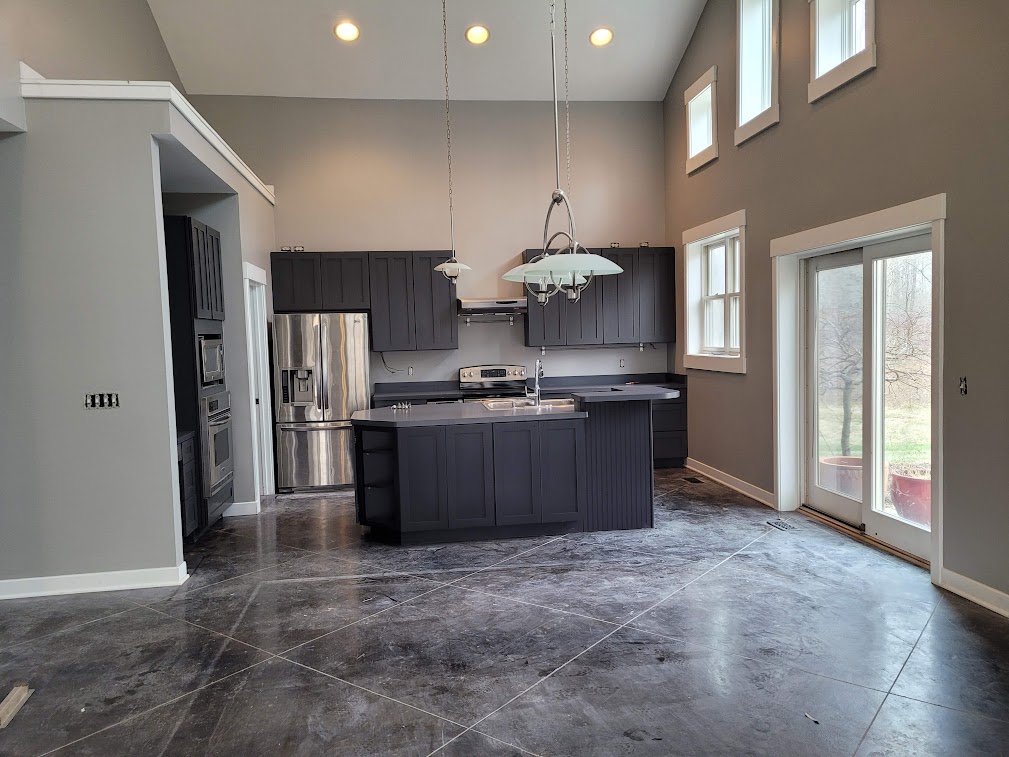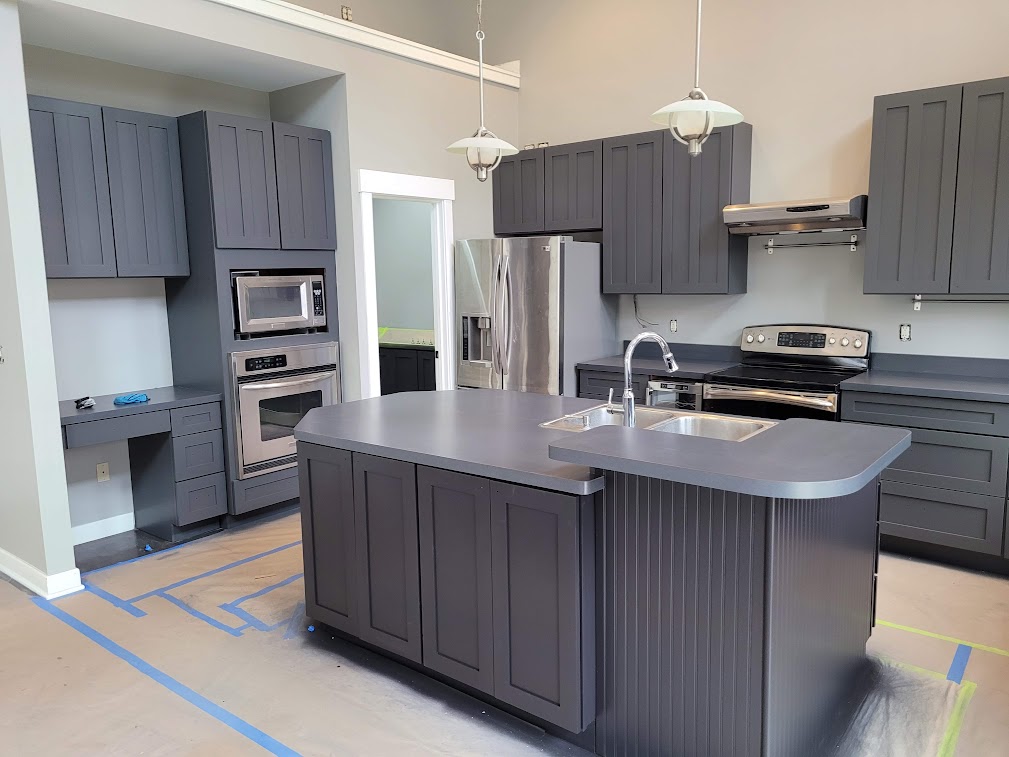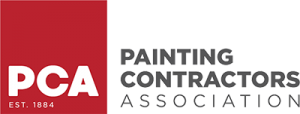Choosing the wrong interior paint system—using a mismatched primer, the wrong sheen, or low-quality paint—leads to failure. Not in five or ten years, but often within months.
You might think you’re saving money by skipping primer or going with the cheapest gallon on the shelf. But the hidden costs pile up fast:
-
Repainting after early peeling or cracking
-
Rework labor when adhesion fails
-
Poor scrubbability that leaves walls dirty and unappealing
-
Lost tenants or buyer confidence due to stained, streaky, or moldy walls
Whether you’re managing rental properties, remodeling for resale, or maintaining your home, choosing the wrong paint system means more than cosmetic flaws—it drains time, budget, and value.
Let’s break down where bad paint decisions go wrong, how much they truly cost, and what pros do differently to protect every surface from damage, traffic, and time.
What Is an Interior Paint System—And Why It Matters
What Is a “Paint System”?
A paint system refers to the full, layered approach used to ensure a durable, long-lasting interior finish:
-
Primer: Bonds to the surface and blocks stains or moisture
-
Topcoat: Adds color, protection, and sheen
-
Finish selection: Each sheen has a purpose—flat, eggshell, satin, semi-gloss
-
Additives: Mold resistance, stain blocking, bonding properties
What works on a new drywall bedroom wall won’t survive a steamy bathroom or greasy kitchen. That’s why every successful interior paint job considers:
| Factor | Description |
|---|---|
| Surface Type | Drywall, plaster, trim, masonry, or cabinets all require different primers and paints |
| Environment | Humid rooms like bathrooms or kitchens need mold-resistant, moisture-tolerant products |
| Use Case | Rentals, high-end homes, resale flips, and personal homes all demand different lifespans and touch-up tolerance |
Why Paint Is a System—Not Just a Product
Slapping on “paint and primer in one” may sound efficient, but it skips the science.
Paint is chemistry. The topcoat must chemically bond to the layer beneath it. If you apply water-based latex over oil-based interior paint without proper prep, it won’t adhere. It’ll flake. If you paint directly on raw drywall with no primer, the wall will absorb the binder—and your finish will look blotchy and peel faster.
Professional painters understand that product compatibility and surface conditions matter more than the label on the can.
What Goes Wrong When the Paint System Is Wrong?
Premature Failure: Cracking, Flaking, Peeling
When paint fails in less than three years, it’s usually due to poor surface prep or incompatible layers. For example:
-
Skipping primer on drywall causes suction—paint dries too fast and won’t adhere properly.
-
Using latex over glossy oil paint without scuffing causes the new paint to delaminate.
Once adhesion fails, fixing it means scraping, sanding, priming, and repainting—doubling or tripling your labor.
Staining, Fading, and Discoloration
Cheap paints don’t block stains from grease, smoke, or water damage. Worse, they lack UV stabilizers, so they fade faster—especially in rooms with large windows or skylights.
Lower-quality paints have less pigment and weaker binders. You’ll see streaks, yellowing, and uneven color retention within a year or two—requiring repainting much sooner than expected.
Poor Touch-Up Performance and Visible Patches
Many economy-grade interior paints can’t be touched up without the patch standing out. Their sheen changes over time, or they apply inconsistently due to binder quality.
This is especially problematic in rentals, where touch-up is routine. A poor system means whole-wall repaints just to fix one stain.
Mold, Mildew, and Moisture Damage
Bathrooms, laundry rooms, and basements require mold- and moisture-resistant primers and topcoats. Without them, walls trap water vapor, leading to:
-
Bubbling interior paint
-
Mold stains
-
Health risks in rental units
-
Expensive drywall repairs
Products like Zinsser Mold Killing Primer and Benjamin Moore Aura Bath & Spa exist for exactly these environments—and ignoring them invites costly consequences.
Cost Breakdown: What You Really Pay for a Bad Paint System
Initial vs. Lifecycle Cost
| Category | Cheap Paint System | Quality Paint System |
|---|---|---|
| Initial Cost | $1–2/sq. ft. | $3–5/sq. ft. |
| Repaint Frequency | Every 2–3 years | Every 5–7 years |
| Labor Over Time | High (rework, surface prep) | Low (maintenance only) |
| Finish Durability | Prone to failure | Scuff- and stain-resistant |
Hidden Long-Term Costs
-
Vacancy time during repaints for rental units
-
Contractor labor to strip or re-prime failed surfaces
-
Loss of value in a home sale due to visible interior paint damage
-
Disrupted tenants or occupants who must live through repeat painting
The total cost of ownership makes low-cost interior paint systems the most expensive choice over time.
Room-by-Room Guide: Building the Right Interior Paint System
Living Rooms & Bedrooms
-
Best Primer: Zero-VOC drywall primer
-
Best Finish: Eggshell or matte scrubbable finish
-
Top Products:
-
Benjamin Moore Regal Select
-
Sherwin-Williams Duration Home
-
-
Why: Low-sheen finish hides imperfections but is still washable.
Kitchens & Bathrooms
-
Best Primer: Mold- and stain-blocking (Zinsser Mold Killing Primer)
-
Best Finish: Satin or semi-gloss with moisture resistance
-
Top Products:
-
Behr Premium Plus Ultra
-
Benjamin Moore Aura Bath & Spa
-
-
Why: Resists moisture, food stains, and mildew.
Hallways & Entryways
-
Best Primer: High-hide for stain resistance
-
Best Finish: Satin or enamel
-
Top Products:
-
Behr Scuff Defense
-
Sherwin-Williams Emerald Interior
-
-
Why: Stands up to handprints, backpacks, and constant use.
Trim, Doors, & Cabinets
-
Best Primer: Bonding primer (Kilz Adhesion, Stix)
-
Best Finish: Semi-gloss or gloss enamel
-
Top Products:
-
Benjamin Moore Advance
-
Sherwin-Williams ProClassic
-
-
Why: Smooth, cleanable, and hard-drying for durability.
How Pros Build Durable, Cost-Effective Interior Paint Systems
Step 1: Evaluate the Surface
Pro painters start with testing:
-
Moisture readings in bathrooms or basements
-
Surface type: wood, drywall, or glossy trim
-
Stain presence: water damage, smoke, or rust
This determines whether they need bonding primer, stain blocker, or mold resistance.
Step 2: Match Products, Not Just Brands
Not all paints and primers are compatible—even within the same brand. Pros follow manufacturer-approved systems, ensuring:
-
Primer-to-topcoat adhesion
-
Sheen consistency
-
Warranty coverage
Mixing products without research can cause flashing, poor touch-up, or premature peeling.
Step 3: Prepare Like It’s Permanent
Pros never skip:
-
Cleaning (TSP, degreasers)
-
Sanding glossy surfaces
-
Caulking cracks
-
Spot-priming patches or raw areas
Proper prep is the difference between a 2-year and a 10-year paint job.
People Also Asked (FAQs)
What’s the best paint system for rental units?
Satin or eggshell finish with a stain-blocking primer. It hides imperfections and withstands frequent cleaning.
Can I skip primer if the paint says “paint and primer in one”?
Only on pre-painted, well-prepped surfaces. Never skip primer for raw drywall, oil-based surfaces, or stained walls.
Why does my paint keep peeling after 6 months?
Most likely, there’s a bonding issue—latex over oil, no primer, or painting over dirty or damp surfaces.
Is there a difference between DIY and contractor-grade paint?
Yes. Contractor-grade paints often have better coverage, more solids, and superior durability.
Do expensive interior paints actually last longer?
Generally, yes. Higher binder content, better pigments, and advanced resins make them more washable and longer-lasting.
Smart Interior Paint Systems Save You More Than Money
Bad paint systems don’t just look bad—they cost more.
Peeling trim, stained walls, and visible patch jobs lead to more labor, lost time, and lower property value. Whether you’re managing a rental portfolio or refreshing your home, choosing the right primer, topcoat, and finish is an investment in durability, cleanliness, and peace of mind.
Smart systems = fewer repaints, less maintenance, better ROI.
Need help selecting the right paint system for your home or property? Contact our professional team for a customized interior paint system recommendation built to last.





